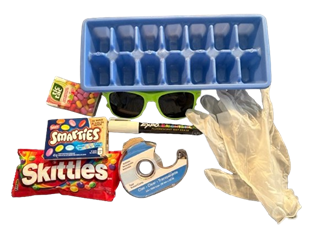Medications
Simulation No. 01 - Medications - MIND OVER MEDS
This simulation explores the challenges that come with managing multiple medications while coping with physical and cognitive age-related changes. Between the years 2017 and 2021, on average, 1 in 4 Canadian seniors were prescribed drugs ranging from over 10 different varieties (1). It was also established that 21% of Canadian older adults dealt with what is known as polypharmacy, meaning the regular use of five or more medications at a time (2). This can be incredibly challenging for the aging population when additional health conditions are present, as well as in the presence of adverse drug reactions(3).
In 2024, it was found that 73% of Canadian older adults aged 65+ live with common chronic diseases that affect both memory and physical activity(4). Some of these diseases can cause difficulties when handling multiple medications, including remembering complex medication schedules, opening pill bottles, and handling small pills with limited dexterity due to arthritis or tremors.
Your task in this simulation is to recall a medication schedule from memory while simulating physical and cognitive impairments. Reduced fine motor skills and arthritis will be mimicked with taped-up rubber gloves, while sunglasses will be used to simulate vision changes. Memory decline will also be represented through the use of distraction challenges, which will make recalling the medication schedule more difficult.
The simulation is meant to evoke empathy for the daily struggles many older adults face while taking medications in the presence of additional health conditions.
Simulation Video
Duration of Simulation - 5 minutes and 21 seconds.
Full Simulation Guide
Materials
- 1 ice cube tray (alternative: egg carton)
- 3 different coloured candies (red, brown, green). You can use 1 pack of Smarties, M&Ms, or Skittles
- Rubber gloves
- Tape (alternative: rubber bands)
- Marker
- Sunglasses
- Timer

Procedure
- Put a piece of clear tape over the lenses of your sunglasses.
- Mark a dot on the tape.
- Label each column of the ice cube tray with the days of the week (Monday, Tuesday, Wednesday, etc.). This is where you will sort your medications. Each day should have two separate sections to represent morning and night doses.
- Pour out all of the candies.
- Sort out the colours you will be using as pills.
- Put on the rubber gloves and tape each knuckle on the hand you will be using to sort the candies. Make sure it is not too tight, but still enough to reduce mobility.
- Set up and start a 1-minute timer and read the following Medication Schedule. You only have those 60 seconds to memorize it. Do not write it down.
- Red Candy: High blood pressure medication; take two every morning.
- Brown Candy: High cholesterol medication; take one every morning.
- Green Candy: Anxiety medication; take one at night but skip it every third day because it may cause side effects (this is your problematic pill).
- Before you proceed, take a moment to complete this distraction challenge:
- Take 10 seconds to list the colours of the rainbow
- List 10 fruits and vegetables out loud in 20 seconds
- Take 20 seconds to count backward from 20 by 2s
- Start a 2-minute timer.
- With the taped gloves on, place the correct “pills” into the ice cube tray based on what you remember from the medication list (NOTE: Do not check the schedule again. Do it from memory).
- Once you have completed the task, reflect on your experience using the reflection questions below.
Reflection Questions
- What did you find most challenging: remembering the schedule or physically sorting the pills? In what ways did the simulation influence your perspective on complex medication schedules when dealing with aging changes?
- Are there any older adults in your life who take multiple medications to manage a variety of chronic health conditions? What challenges do they face while managing their medication routine?
- Imagine having to perform the tasks within the simulation on a regular basis. How would this impact your daily life? What tools or strategies could aid in making medication handling more manageable for older adults?

